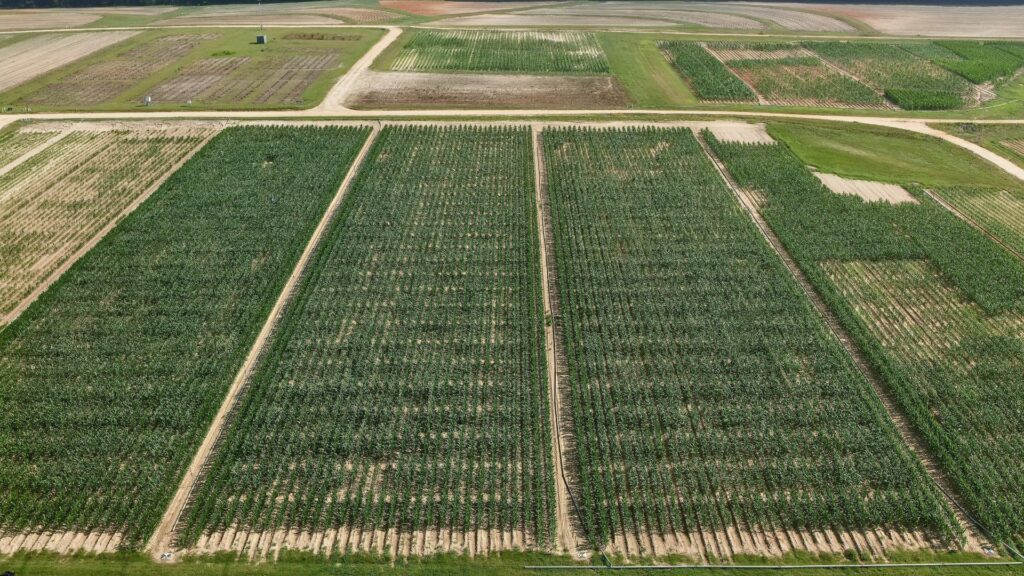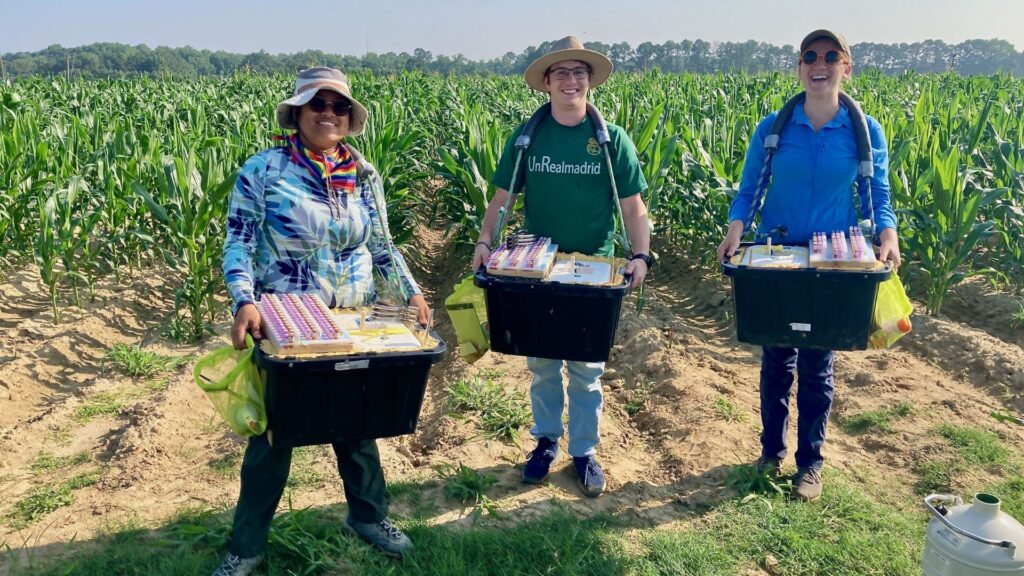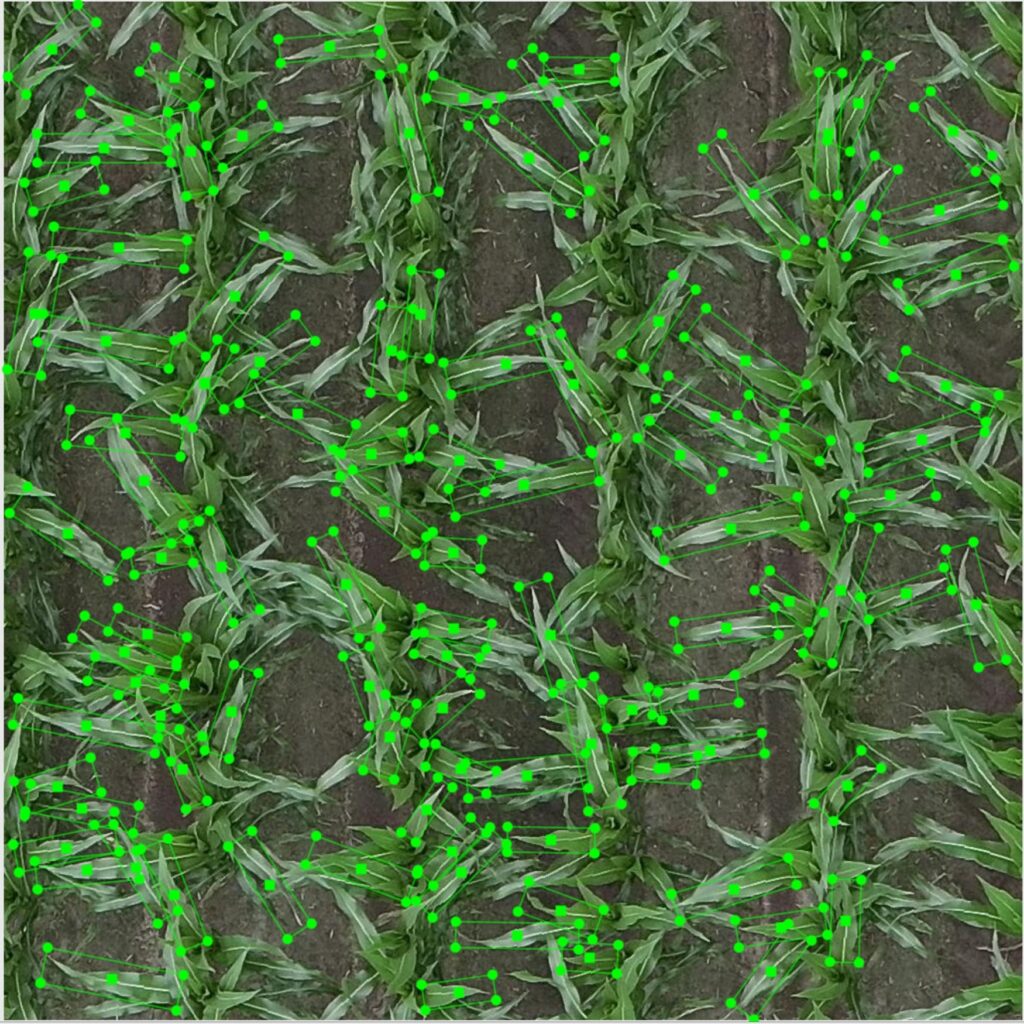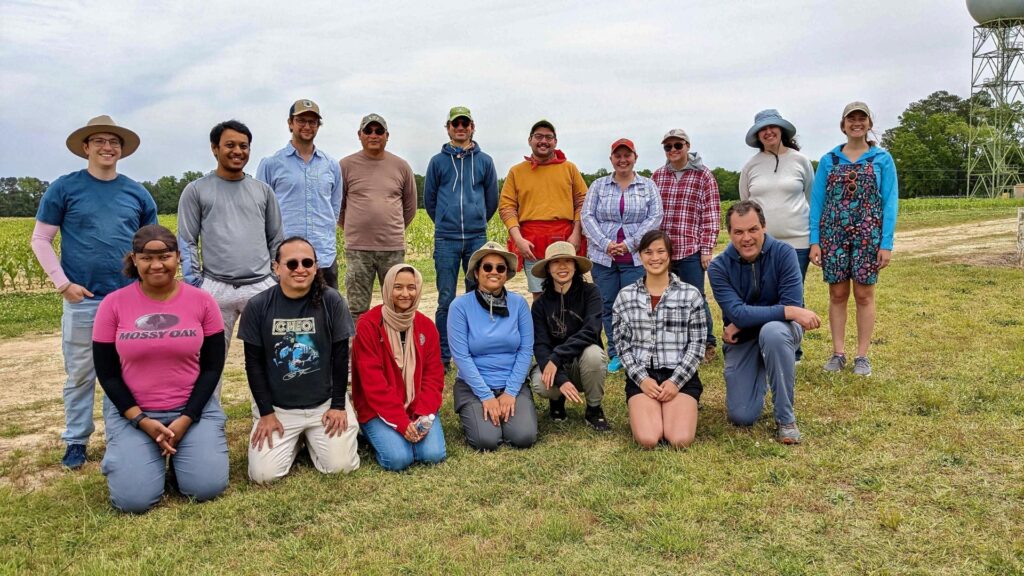Gage Secures $1.9M NIH Grant to Study Gene-Environment Interactions

Dotted across the Midwest and Eastern United States are a couple dozen two-acre plots of land, each seeded in neat rows with the same several hundred corn hybrids. The plots are subjects of a new research project funded by the National Institute of Health (NIH) and led by Joseph Gage, assistant professor in the Department of Crop and Soil Sciences at North Carolina State University.
Gage and his collaborators are part of the Genomes2Fields (G2F) Initiative, a network of interdisciplinary scientists studying the complex interplay between different corn varieties and the environments where they grow. It’s a concept known as gene-environment interaction (GxE) and it describes how two or more genotypes — crop varieties — respond to environmental variation.

In plant breeding, gene-environment interactions are studied by observing crops’ phenotypic differences across geographies and climatic conditions. Typical traits of interest in corn include plant height, cob size and number of kernels. The project will document how these differ between varieties, and from site to site.
Imagine a North Carolinian plant breeder develops a new, specialized corn with a suite of genes that enable it to tolerate high humidity and torrential downpour, weather conditions common to the coastal state. But take those same seeds more than 1,000 miles northwest to Iowa — the country’s top corn producer — and the crop suffers, overwhelmed by the region’s drier inland conditions. Conversely, a different variety favored by Iowa farmers offers a disappointingly low yield when planted in North Carolina.

Gage and his collaborators’ research will illuminate how the environment influences gene expressions that help a corn crop flourish. The knowledge and tools that come from this work will benefit farmers and consumers by identifying ways of breeding varieties to withstand volatile weather and unpredictable climates, ensuring long-term food security and adaptation to planetary warming.
Guiding Crop Development: A Longstanding Human Endeavor
Humans have been guiding plants’ genetic development based on their phenotypic traits for 10,000 years. For most of human history, plant breeding happened manually as farmers cross-bred their favorite plants. Over time, varieties emerged that were well-adapted to local growing conditions. The G2F collaboration is an extension of this long-honed cultivation effort. Today, as genome sequencing and computation techniques become increasingly accessible, researchers like Gage find themselves inundated with genetic data that lets them map plant traits to specific genes. It’s exciting, he says, but also complicated.
“We’re talking about 30,000 genes in the [corn] genome that are all simultaneously tuning their levels up or down in response to dozens, hundreds, thousands of environmental stimuli,” he notes. “All of those hundreds and thousands of genes have only a minute effect on the trait of interest. But cumulatively, they determine [the plant’s] height or the weight of the kernels on an ear of corn,” indicators that have a direct impact on farmers’ bottom lines.

The accumulation of gene-environment interactions has always been important to people who grow food, even if they couldn’t say why those interactions occurred at the genetic level. By observing differences that surface between hybrids in a range of environmental settings, GxE research helps us elucidate why certain traits emerge in certain varieties, while others do not.
Spotting patterns among the noise is part of why Gage loves his work. “Being the first person to see whatever patterns or findings fall out of a large dataset — that is thrilling.”
Gene-Environment Interactions in a Range of Contexts
Gage acknowledges that it’s unusual for the NIH to fund agricultural research — the agency typically invests in studies with more obvious applications in biomedical science and public health. But GxE is not limited to crop science. All living things, including humans, are subject to gene-environment interactions. While GxE could theoretically be studied in other model systems with more applicability to humans, research within controlled laboratory settings cannot reflect the same real-world complexity.
“We made the case [to the NIH] that we can use crop species as a really good system to learn about molecular GxE because it has a lot of advantages that other systems don’t,” Gage says.

Plants can be grown in places where they have economic importance and can be exposed to the same soil, water and weather conditions as their commercial counterparts. This enables GxE researchers to make more accurate assessments of how environmental stimuli influence gene regulation. Importantly, some of the mechanisms by which genes are turned “on” or “off” are well-conserved across kingdoms, meaning the findings from this work may be generalizable beyond just plants.
For this reason, the grant isn’t limited to any individual species. Gage intends to eventually turn his attention to other crops as well.
“Wheat, tobacco and sweetpotatoes — these are all important crops in North Carolina where gene-environment interactions are sometimes difficult to understand,” he says.
This work will lead to insights across multiple fields and applications in agriculture, including genetics and even bioengineering. Concretely, it addresses fundamental problems related to food security and climate adaptation and could inform improved crop breeding and production practices. Even more deeply, this research helps us understand at the genetic level how living organisms are coded to respond to varied, dynamic environments.


